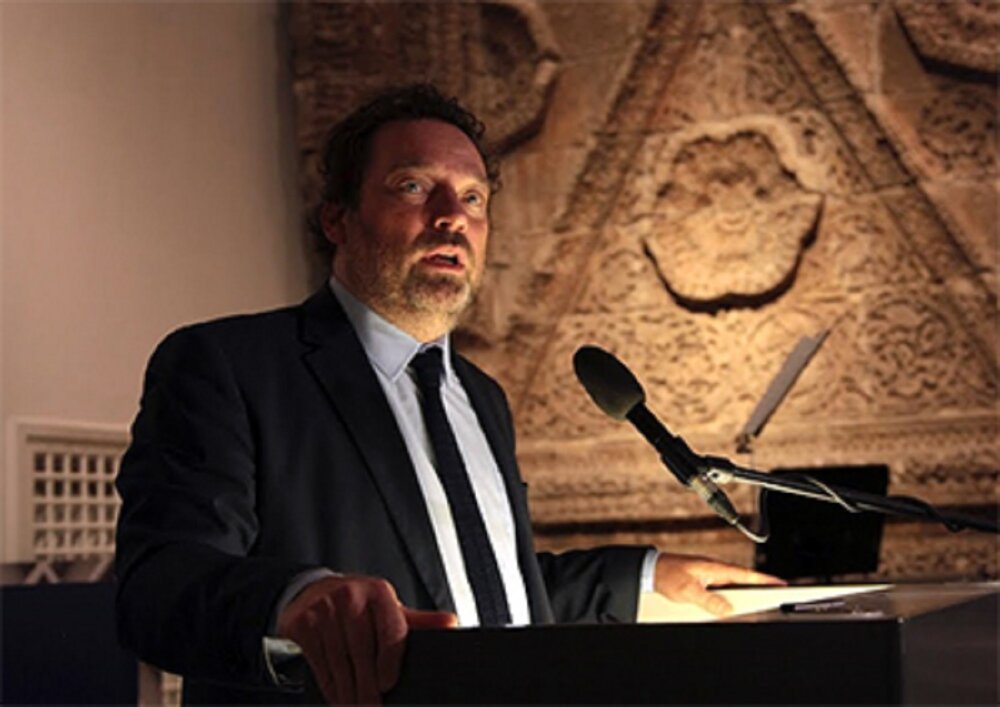Hawzah News Agency –At the opening ceremony of the exhibition "Iran: Five Thousand Years of Culture and Art" at the Pergamon Museum of Islamic Art in Berlin, Stefan Weber the curator of the museum said Iran’s history and culture are one of the most valuable cultures in the world.
According to the Public Relations Department of the of the Islamic Culture and Relations Organization (ICRO), in a major cultural event in Berlin, the exhibition "Iran: Five Thousand Years of Culture and Art" was opened with the presence of a group of cultural and scientific figures, German Iranologists, Orientalists, Sarikhani’s family members and German diplomats.
The exhibition showcasing a collection of valuable and unique museum works from the Sarikhani Gallery in London and historical and artifacts from the Pergamon Museum in Berlin, opened at the Berlin Museum of Islamic Art.
Christina Hogg, Director of the Berlin Museum, Stefan Weber, Director of the Museum of Islamic Art, Hamid Mohammadi, Cultural Attaché of the Islamic Republic of Iran in Germany, Ms. Ina Sarikhani, Director of the London Sarikhani Foundation, and Otte Franke, Executive Director of the Exhibition took part at the opening ceremony.
The uniqueness of the works presented in the exhibition, its importance in terms of history and cultural art and the high level of value of the exhibition were among the most important topics that the speakers addressed.
Speaking at the event, Stefan Weber, director of the Museum of Islamic Art, said this cultural event is aimed at an independent look at a very important and very ancient national culture that is important to us as well."
Hamid Mohammadi, Iran’s Cultural Attaché in Germany, also mentioned the tireless efforts of Ms. Otte Franke and her colleagues for several months to set up this exhibition and said" Five thousand years of Iran was moved from London to Berlin, it is commendable and valuable".
Referring to the importance of such cultural events, he said this unique exhibition takes us to the depths of history to learn more about the culture and art of Iran, one of the greatest historical civilizations in the world.
He pointed out that without a doubt, holding such a large exhibition will increase the knowledge of German culture-loving people about Iranian culture and art, and especially about the unique historical role of Iran in advancing human civilization and producing science and promoting innovation and promotion and to learn more about art.
Ms. Ina Sarikhani, director of the London Sarikhani Foundation, expressed the greatness of Iran"s history and culture and said this collection presented in this magnificent exhibition shows only a part of the greatness of Iran’s history and culture.
Otte Franke, the executive director of the exhibition, who also manages the research project "Greater Khorasan: Land of the Rising Sun and the main region of cultural development in the Islamic world", said: The great civilization is historical, but artifacts creations outside the specialized world remain infinitely unknown.
Franke added: "The exhibition of five thousand years of Iranian culture and art in Berlin highlights this pivotal role of Iran in trans-regional political, economic and cultural relations and brings this important message to the viewers."
Performance of traditional Iranian music, screening of a documentary on the history and antiquities of Iran and screening of two documentaries from Isfahan were other programs of this ceremony.
Also, at the same time with the establishment of this exhibition, the book "Five Thousand Years of Iranian Culture and Art" in 400 pages and along with 540 color images in German was published by "Hirmer" Publishing Company.
The exhibition will be on display at the James Simon Gallery on Berlin’s Museum Island until Nowruz 1401, with the introduction and display of 400 works of art.
The most important highlights of these cultural collections are the relics of pre-Islamic empires, the Achaemenid and Sassanid periods, the development of Iranian-Islamic culture, artistic masterpieces of the ninth and fifteenth centuries AD and the Safavid period of prosperity.
The Berlin Museum of Islamic Art, known as the Pergamon, is one of the richest museums in the world, located in Berlin, the capital of Germany. More than one million people every year from all over the world visit this museum.


Your Comment